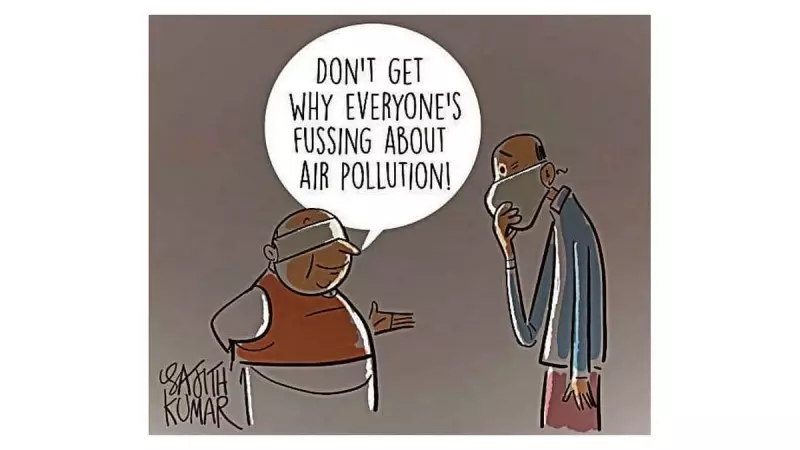
While India grapples with yet another season of hazardous air quality, a poignant cartoon from Deccan Herald cuts through the noise with biting satire. The illustration captures the nation's disturbing nonchalance toward an environmental catastrophe that claims millions of lives annually.
The cartoon depicts a striking contrast between citizens going about their daily lives in thick smog and their complete disregard for the toxic air they're breathing. This visual commentary exposes our collective failure to treat air pollution with the urgency it demands.
The Unseen Emergency
Across northern India, particularly in Delhi and the National Capital Region, air quality indices regularly breach 'severe' categories during winter months. Yet, despite visible smog and health warnings, public response remains remarkably muted.
What makes this indifference particularly alarming?
- Air pollution contributes to over 1.6 million premature deaths in India each year
- Children and elderly face the highest risk from prolonged exposure
- Economic costs exceed billions of dollars in healthcare and productivity losses
A Pattern of Normalization
The cartoon brilliantly captures how we've normalized breathing poison. Instead of demanding urgent action, we've adapted with air purifiers, masks, and resigned acceptance.
"The real tragedy isn't just the polluted air," the artwork suggests, "but our ability to ignore what should be unacceptable."
This satirical piece serves as a mirror to society, questioning why visible crises like traffic jams generate more immediate reaction than the invisible killer in our air.
The Way Forward
Environmental experts argue that addressing air pollution requires:
- Stringent enforcement of industrial emission standards
- Accelerated transition to clean energy sources
- Improved public transportation infrastructure
- Cross-state coordination on agricultural burning
The cartoon's message is clear: until we stop treating toxic air as normal, meaningful change remains distant. As winter approaches, the question isn't just about pollution levels, but about our collective will to breathe freely again.





